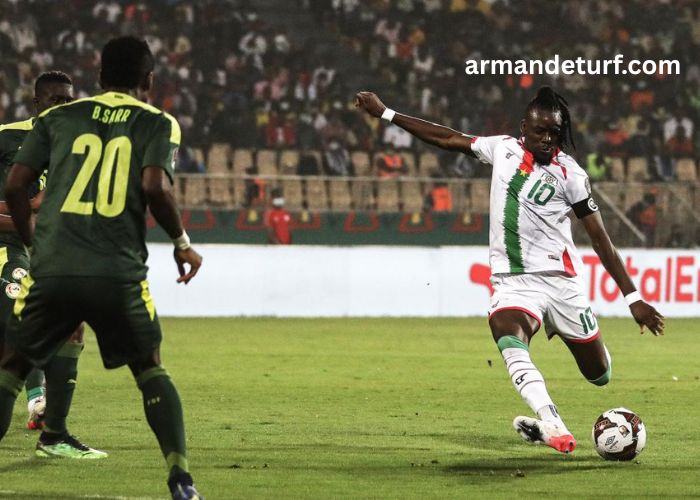Carte DE L’afrique
From the vast deserts of the Sahara to the lush rainforests of the Congo, the African continent is home to immense geographical diversity. A detailed Carte DE L’Afrique is essential for understanding the full scope of this rich and vibrant landmass, highlighting its natural wonders, political borders, and unique regional identities.
A well-designed Carte DE L’Afrique does more than just mark cities and countries—it offers deep insight into history, culture, and economic patterns. By studying the Carte DE L’Afrique, learners, travelers, and professionals alike can gain a more informed perspective on how the African continent is shaped and organized.
What Is the Purpose of a Carte DE L’Afrique?
The Carte DE L’Afrique serves as a crucial visual tool for mapping the African continent in various contexts, from educational settings to geopolitical analysis. It is designed to provide a detailed representation of Africa’s geography, including political borders, natural landmarks, rivers, mountains, and key cities. The Carte DE L’Afrique helps users gain an organized understanding of spatial relationships between African nations and regions.
In schools and universities, the Carte DE L’Afrique is frequently used in geography, history, and international relations classes to teach students about Africa’s diversity and complexity. Travelers and researchers also rely on the Carte DE L’Afrique to prepare for expeditions, understand regional conflicts, or assess development patterns. The widespread use of the Carte DE L’Afrique shows its value as both a practical and academic resource that connects visual data with real-world relevance.
How Has the Carte DE L’Afrique Evolved Over Time?
The Carte DE L’Afrique has evolved significantly from ancient times to the present day, reflecting shifting political landscapes, colonial history, and technological advancements. Early versions of the Carte DE L’Afrique were based on limited exploration and often contained inaccuracies or imaginative interpretations of uncharted territories. As explorers ventured deeper into the continent during the colonial era, the Carte DE L’Afrique became more detailed and accurate, although often influenced by imperialist perspectives.
Today’s modern Carte DE L’Afrique is the result of satellite imagery, geographic information systems (GIS), and contributions from local governments and global organizations. These advancements ensure that the Carte DE L’Afrique is now one of the most reliable representations of the African continent. It accurately shows recognized national borders, geographical zones, population centers, and key economic regions. As African nations continue to grow and develop, the Carte DE L’Afrique remains a dynamic resource that changes to reflect new realities on the ground.
Why Is the Carte DE L’Afrique Important in Education?
The Carte DE L’Afrique is a cornerstone of African studies in classrooms around the world, offering a foundational tool for teaching geography, culture, and geopolitics. By analyzing the Carte DE L’Afrique, students can visualize the spatial arrangement of African countries, understand the distribution of natural resources, and explore regional dynamics that shape the continent’s socio-political landscape. Teachers use the Carte DE L’Afrique to spark discussions about climate zones, historical migration patterns, and international relations within Africa.
Moreover, the Carte DE L’Afrique aids in developing spatial thinking and map-reading skills, which are crucial in an increasingly data-driven world. The ability to interpret and analyze maps like the Carte DE L’Afrique allows students to engage critically with global issues, from environmental conservation to economic development. As such, the Carte DE L’Afrique is not only a map—it is a bridge to deeper understanding and informed global citizenship.
Where Can You Access a Detailed Carte DE L’Afrique?
A detailed Carte DE L’Afrique can be accessed through various sources depending on your needs, ranging from physical maps to digital platforms. Educational publishers produce high-quality wall maps and atlases that feature a printed Carte DE L’Afrique for classroom or personal use. These maps often include thematic overlays that highlight climate, population, or economic activity, making the Carte DE L’Afrique even more informative for in-depth learning.
Online, there are interactive versions of the Carte DE L’Afrique available on platforms like Google Maps, GIS databases, and academic websites. These digital maps allow users to zoom in, customize data layers, and analyze specific details in real time. Museums, embassies, and government institutions also frequently offer free or purchasable versions of the Carte DE L’Afrique, both in print and digitally. With so many resources available, anyone interested in Africa’s geography can easily obtain and explore a Carte DE L’Afrique that suits their purpose.
How Can the Carte DE L’Afrique Help in Travel Planning?
For travelers, the Carte DE L’Afrique is a practical and indispensable resource that assists in navigating one of the world’s most diverse continents. Before embarking on a journey, travelers use the Carte DE L’Afrique to plan routes, understand border crossings, and explore natural landmarks. It offers a visual reference for estimating distances, identifying transportation hubs, and discovering off-the-beaten-path destinations that may not be well-publicized.
Beyond logistics, the Carte DE L’Afrique helps travelers appreciate the cultural and historical richness of each region. Whether you’re visiting the markets of Morocco, the wildlife parks of Kenya, or the historic sites of Ethiopia, the Carte DE L’Afrique gives context to each location. It connects the dots between major cities, remote villages, and UNESCO heritage sites, making travel planning more immersive and culturally respectful. For anyone exploring Africa, the Carte DE L’Afrique becomes not just a tool, but a companion on their journey.
How Does the Carte DE L’Afrique Influence Global Perspectives?
The Carte DE L’Afrique plays a significant role in shaping global perceptions of Africa by influencing how people understand the continent’s size, diversity, and geopolitical relevance. Maps like the Carte DE L’Afrique have the power to either reinforce or challenge stereotypes depending on how they’re presented. Accurate and detailed versions of the Carte DE L’Afrique showcase the true scale of Africa—larger than many people realize—and highlight its wealth of cultures, languages, and ecosystems.
In diplomatic, academic, and media circles, the Carte DE L’Afrique is frequently used to discuss foreign policy, humanitarian efforts, and development strategies. By using an updated Carte DE L’Afrique, decision-makers can make more informed choices about resource allocation, partnership development, and crisis response. Furthermore, NGOs and international organizations rely on the Carte DE L’Afrique to coordinate projects, distribute aid, and promote regional cooperation. Thus, the Carte DE L’Afrique is a powerful instrument not only for knowledge but for global change.
Conclusion
In summary, the Carte DE L’Afrique is far more than a simple map—it is a gateway to understanding a continent of immense beauty, complexity, and global importance. From education to travel, from diplomacy to development, the Carte DE L’Afrique plays a pivotal role in how Africa is explored, understood, and engaged with.
As our world becomes increasingly interconnected, relying on tools like the Carte DE L’Afrique ensures that we approach Africa with curiosity, respect, and informed perspective. Whether you’re a student, traveler, or policymaker, turning to the Carte DE L’Afrique can provide insight that goes far beyond borders.



